BLADE: it is strong and massive, the steel is encased in a part of decorated bronze which is imade in one single piece with the grip
. A finely chiseled frieze of plant motifs decorates the bronze part which supports the blade near the back of the weapon. Two silver threads are embedded in the steel near the bronze part.
Dimensions of the blade = Thickness at the heel 5mm, width at the highest 7 cm Length 25 cm
GRIP : Solid bronze grip, in a single piece, from the guard to the pommel which is in the shapeof volutes chiseled in high relief.
On each side of the handle is fixed a bone plaque chiseled with typical Ceylonese patterns.
This model of knife is different from the Piha Kaetta that we usually meet.
The robustness of the blade and the weight of the weapon lead to the conclusion that this is very probably a knife intended for sacrificial use in Hindu rites.
These knives for religious purposes have very rarely been exported.
To be prudent I date the piece from the 19th century, but it is very possible that it may be older, probably around the middle of the 18th century.




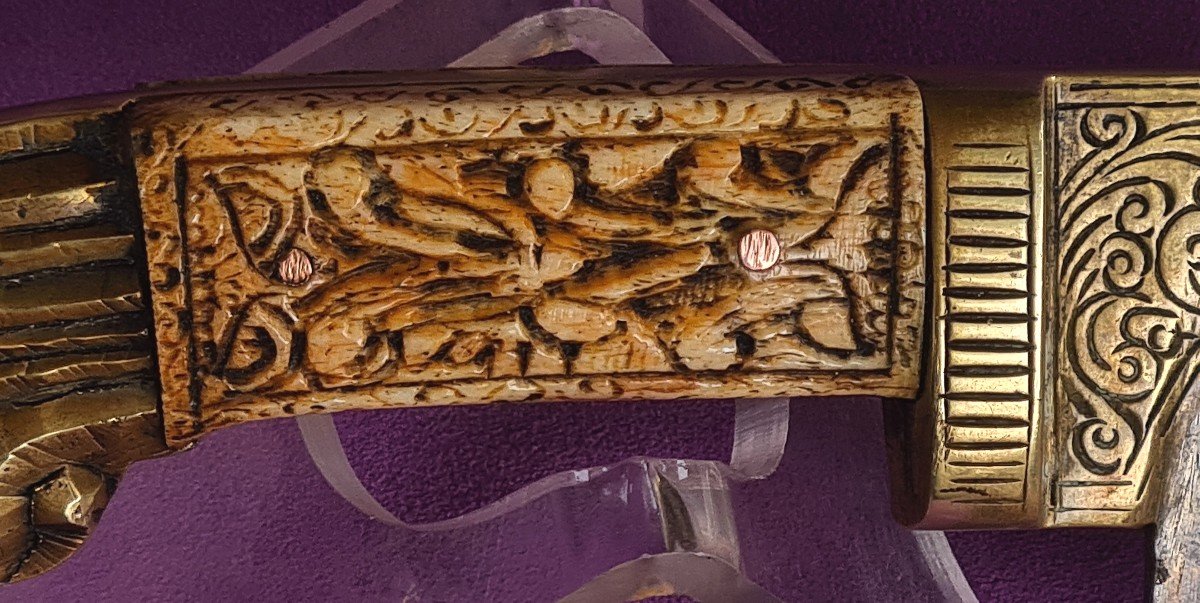
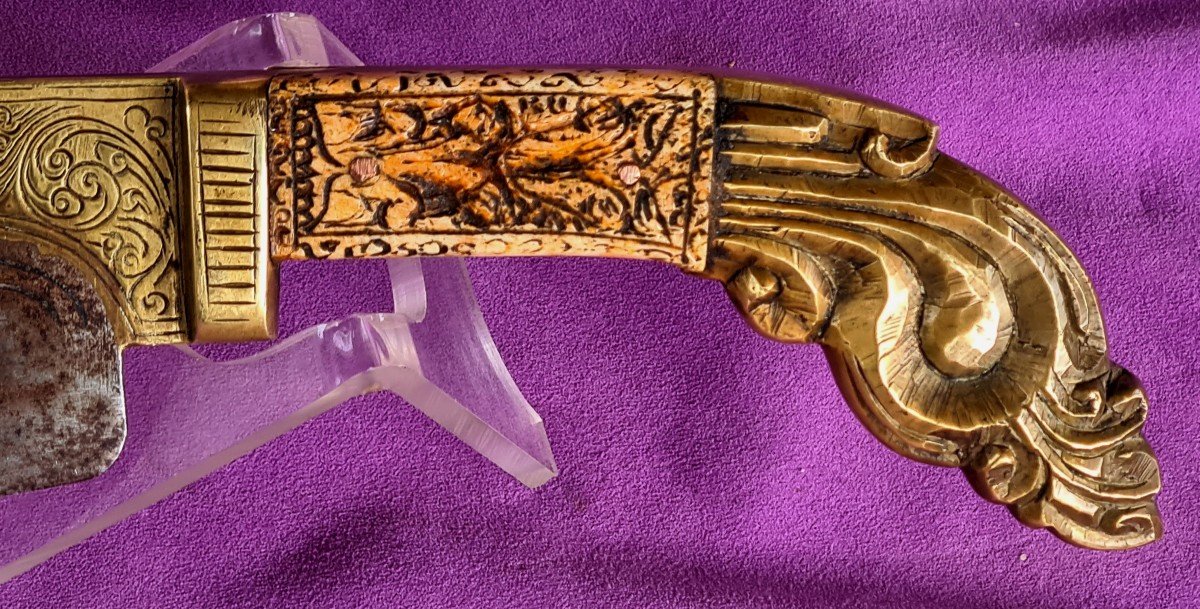

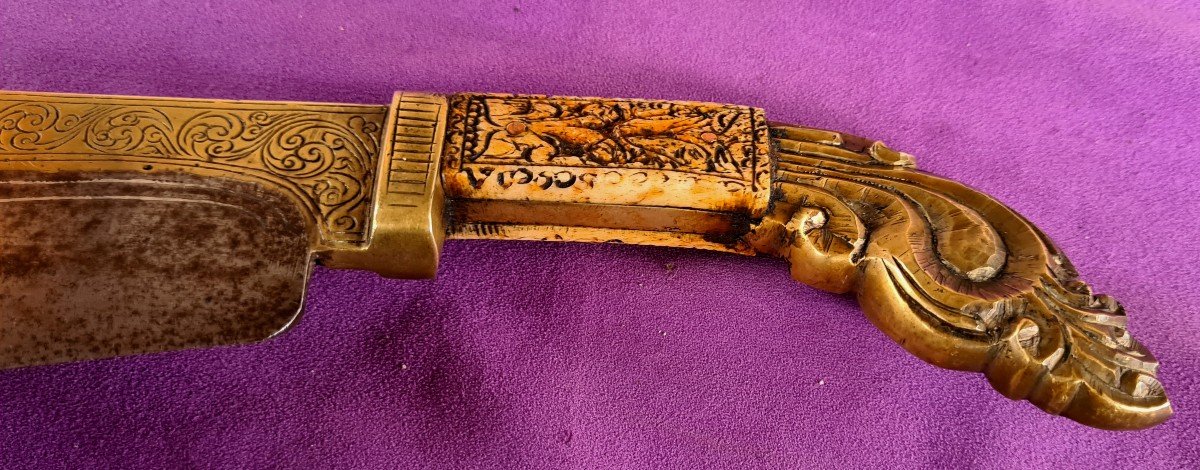


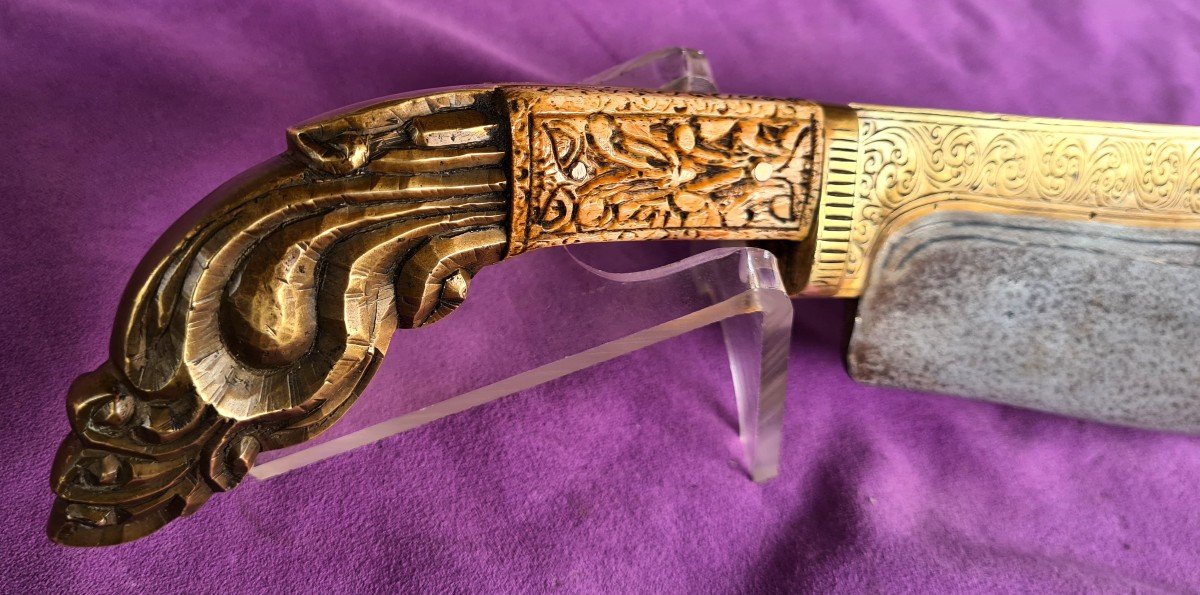
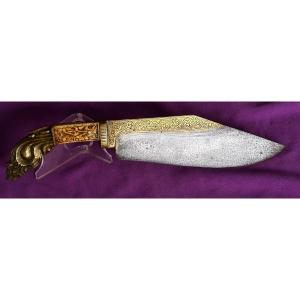














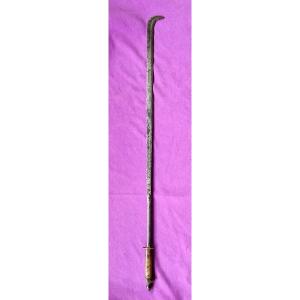

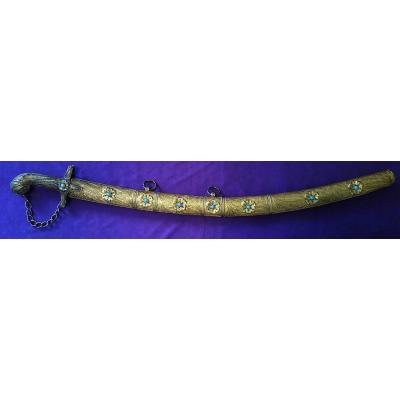

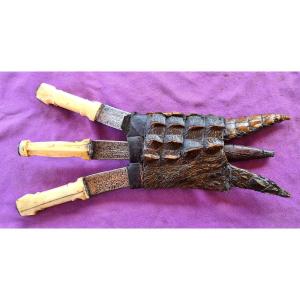



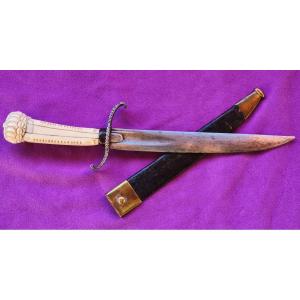









 Le Magazine de PROANTIC
Le Magazine de PROANTIC TRÉSORS Magazine
TRÉSORS Magazine Rivista Artiquariato
Rivista Artiquariato